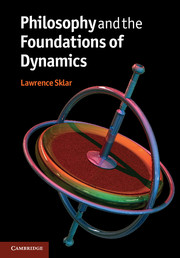Book contents
- Frontmatter
- Contents
- Chapter 1 Introduction
- Chapter 2 The pre-history of classical dynamics
- Chapter 3 The astronomical revolution
- Chapter 4 Precursors to Newtonian dynamics
- Chapter 5 The Newtonian synthesis
- Chapter 6 Philosophical aspects of the Newtonian synthesis
- Chapter 7 The history of statics
- Chapter 8 The development of dynamics after Newton
- Chapter 9 The “Newtonian” approach after Newton
- Chapter 10 From virtual work to Lagrange's equation
- Chapter 11 Extremal principles
- Chapter 12 Some philosophical reflections on explanation and theory
- Chapter 13 Conservation principles
- Chapter 14 Hamilton's equations
- Chapter 15 Canonical transformations, optical analogies and algebraic structures
- Chapter 16 The search for new foundations
- Chapter 17 New directions in the applications of dynamics
- Chapter 18 Spacetime formulations of Newtonian dynamics
- Chapter 19 Formalization: mass and force
- Chapter 20 Relationist dynamics
- Chapter 21 Modes of explanation
- Chapter 22 Retrospective and conclusions
- References
- Index
Chapter 7 - The history of statics
Published online by Cambridge University Press: 05 December 2012
- Frontmatter
- Contents
- Chapter 1 Introduction
- Chapter 2 The pre-history of classical dynamics
- Chapter 3 The astronomical revolution
- Chapter 4 Precursors to Newtonian dynamics
- Chapter 5 The Newtonian synthesis
- Chapter 6 Philosophical aspects of the Newtonian synthesis
- Chapter 7 The history of statics
- Chapter 8 The development of dynamics after Newton
- Chapter 9 The “Newtonian” approach after Newton
- Chapter 10 From virtual work to Lagrange's equation
- Chapter 11 Extremal principles
- Chapter 12 Some philosophical reflections on explanation and theory
- Chapter 13 Conservation principles
- Chapter 14 Hamilton's equations
- Chapter 15 Canonical transformations, optical analogies and algebraic structures
- Chapter 16 The search for new foundations
- Chapter 17 New directions in the applications of dynamics
- Chapter 18 Spacetime formulations of Newtonian dynamics
- Chapter 19 Formalization: mass and force
- Chapter 20 Relationist dynamics
- Chapter 21 Modes of explanation
- Chapter 22 Retrospective and conclusions
- References
- Index
Summary
Our concern in this book is with dynamics, namely the science of motion, its description and its causes. But mechanics traditionally had two branches, dynamics and statics, the latter being the science of the unmoving, that is of how forces can jointly result in unchanging, equilibrium, states of systems. Although we shall deal with statics only in a brisk and cursory manner, we must pay some attention to its historical development, since principles developed in statics played a fundamental role in the foundations of some important approaches to general dynamical theories. Before moving on to the development of dynamics beyond Newton's great synthesis, then, we shall have to spend at least a little time surveying some aspects of the development of statics prior to the eighteenth century.
Two basic areas of investigation constituted the initial exploration of statics in ancient Greece. The major set of problems that gave rise to statics consisted in attempts at describing the general laws governing the equilibrium conditions for simple machines. In particular, the lever and the inclined plane were the characteristic problems tackled. A second branch of statics began with considerations of the static behavior of objects immersed in fluids, consideration of which constituted the first efforts at understanding the statics of fluids, hydrostatics. It is the former problem area, though, that is of most interest to us.
- Type
- Chapter
- Information
- Philosophy and the Foundations of Dynamics , pp. 75 - 79Publisher: Cambridge University PressPrint publication year: 2012



